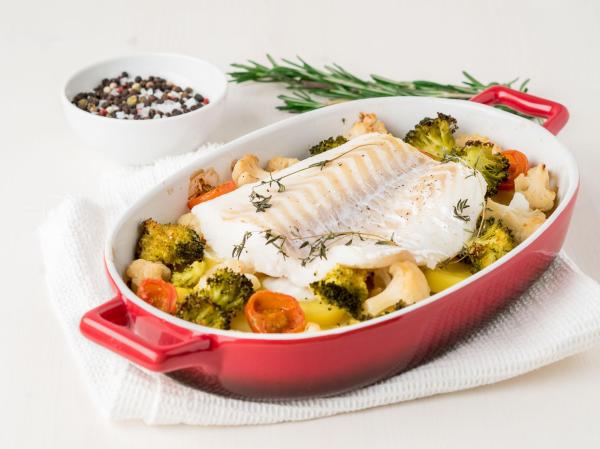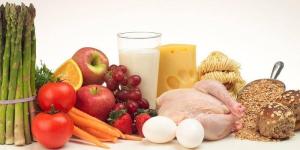Astringent Diet - Which Foods to Eat and Which to Avoid


The astringent diet is a special diet designed to help with various gastrointestinal problems, such as gastroenteritis or diarrhea. After these diseases, the body has to deal with a great loss of nutrients. You can help your body by eating soft foods that do not require much work from the digestive system. However, if the symptoms persist after a few days or are accompanied by pain, vomiting or fever, you should not hesitate to seek medical help.
The following oneHOWTO article explains what the astringent diet is, what foods you may eat, and gives you an appropriate meal plan.
What is the astringent diet?
Anything that causes constriction and desiccation of organic tissue is called astringent. There are many over-the-counter medications that stop diarrhea, but you should keep in mind that they are best not taken without consulting a specialist. Remember that such episodes are a reaction of the body trying to eliminate the substances that harm the digestive system. If the stomach discomfort manifests itself in the form of frequent bowel movements, the astringent diet is an effective aid in children or adults, as it fulfills a dual objective:
- It provides the body with the necessary micronutrients and at the same time ensures adequate hydration, which is essential because diarrhea is associated with severe fluid loss.
- Since it is based on light and easily digestible foods, it helps the stomach and intestines to recover from the episode and gradually start functioning properly again.
We have all suffered from digestive problems at one time or another. Usually it is because we have eaten too much, or we have eaten something that has spoiled our stomach. This discomfort is caused by poor absorption of nutrients and can lead to nausea, abdominal pain, cramping, bloating, heartburn, reflux, and heaviness.
The phases of the astringent diet
The astringent diet should always be adapted to the particular circumstances of the individual. As a general rule, however, the astringent diet limits the consumption of fat and fiber, which are more difficult to digest. When symptoms subside, you should begin to reintroduce all the elements of a balanced diet. These are the most important phases:
- Fasting phase:In the beginning, it is normal for the body to refuse food intake, but this initial fasting phase should be as short as possible. You should also make sure that you eat enough food and drink enough water.
- Fluid intake phase: The second phase of an astringency diet is to introduce the first liquids. Introduce more and more consistent liquids (in the form of purées) as long as the body is able to digest them. Rice water, infusions, clear broths (like chicken broth or beef broth, with any grease removed) or homemade lemonade are a good start.
- Solid food phase: Finally, in the third phase, it is time to start eating appropriate solid foods, always in small amounts and several times a day. It is also important to eat slowly and chew well.
Food poisoning is a common illness that occurs when you consume a drink or food that is contaminated with parasites, viruses, or bacteria. When you have food poisoning, you suffer from the uncomfortable symptoms of your digestive system, including diarrhea.
Astringent diet foods
As a rule, astringent diets consist of nutritious and easily digestible foods.
According to the different groups of astringent foods, the most suitable are:
- Lean beef: tenderloin, sirloin, etc.
- Low-fat meat: chicken (without skin), turkey, rabbit.
- White fish: hake, sole, monkfish, rooster.
- Dairy products: Yogurt, cream cheese, skim milk and lactose-free milk.
- Cereals: rice
- Astringent fruits and vegetables: potatoes, carrots, pumpkin, bananas, apples, and quinces (fruits always ripe and without skin).
Prohibited foods in the astringent diet:
- Legumes and various types of cabbage.
- Carbonated drinks, alcoholic beverages, coffee, and tea.
- Fats, industrial pastries and ultra-processed foods.
- Fruits such as pineapples, cherries, seeded berries, figs, currants, and grapes.
- Raw vegetables.
- Processed foods, especially those with additives.
The way the food is prepared plays a big role in the effectiveness of the astringent diet. First, it is best to eat foods that have been simply cooked and contain a minimal amount of fats or oils. They are best eaten steamed, boiled or grilled so that they do not harm you.
There are many teas and infusions for diarrhea that can help relieve this common stomach problem naturally. Learn more in this other article about what can I take to stop diarrhea naturally.

Example of an astringent diet menu
The duration of diarrhea and gastroenteritis may vary depending on the cause. In any case, the astringent diet helps, because in mild cases the results are gradually noticeable after a few days. So, you can prepare a variety of menus with the foods we have indicated, taking into account the foods that should be avoided while the food intake is already tolerated. The following is an example of a menu based on the astringent diet:
Breakfast: yogurt or milk, preferably fermented, that is, with beneficial bacteria for the intestinal flora. Breakfast can be supplemented with a few slices of cooked ham, turkey or a small piece of bread (not wholemeal bread) with quince. You can also eat hot cereals, such as oatmeal, cream of wheat, or rice porridge.
Morning snack: an infusion with a piece of fruit (banana or apple). You can also eat unseasoned crackers.
Lunch: Mashed potatoes with carrots or pumpkin and boiled white rice with grilled chicken breast seasoned with herbs. Other options are tapioca soup or boiled pasta with cooked pieces.
Afternoon snack: a curd cheese, a portion of cream cheese or a banana.
Dinner: baked white fish with potatoes or an omelet with very little oil.
Finally, keep in mind that people with diarrhea should also make sure they get enough rest, because putting your body under stress while treating diarrhea can prolong recovery. In this regard, they should limit their physical activity, as strenuous exercise can increase the risk of dehydration. Hydration is also very important in the treatment of diarrhea. Therefore, you should drink plenty of water throughout the day.
This article is merely informative, oneHOWTO does not have the authority to prescribe any medical treatments or create a diagnosis. We invite you to visit your doctor if you have any type of condition or pain.
If you want to read similar articles to Astringent Diet - Which Foods to Eat and Which to Avoid, we recommend you visit our Diseases & secondary effects category.
- Home - Spanish Foundation of the Digestive System (FEAD) (saludigestivo.es)





